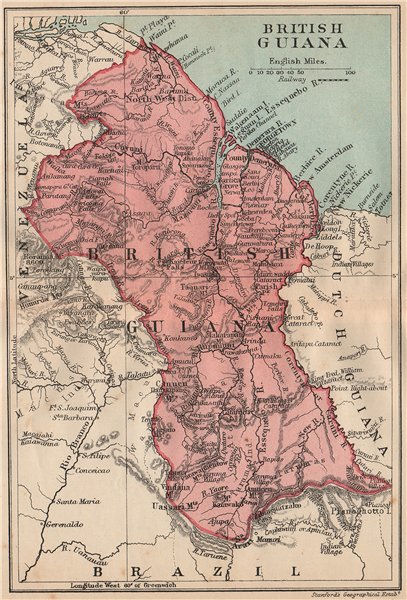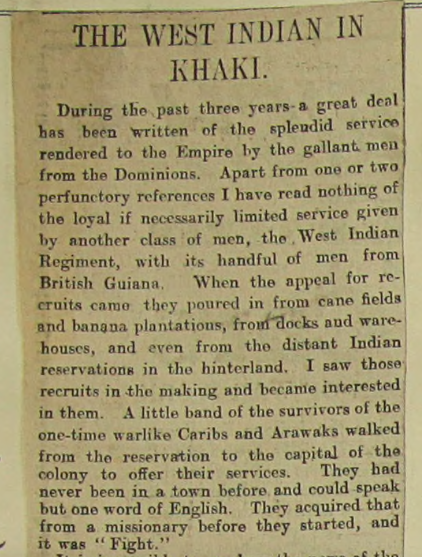British Guiana (Guyana)

Like other colonies in the Caribbean, British Guiana, today Guyana, sent contingents of volunteers to join the British West Indies Regiment. In total, over 700 British Guianese men enlisted. The Governor, Sir Walter Egerton, dissolved the local volunteer force and replaced it with a militia. This new force was eventually partnered with the local infantry reserve to form a military defence force of over 340 men. However, the colony was also home to a number of native tribes, some of whom volunteered to fight when the call came. This astounding development was documented in the Manchester Guardian, from 16th of May 1918:

Rum and molasses formed over 80% of British Guiana’s exports but sugar was also a very important product and the export of it was forbidden to anywhere but Britain. The colony supported the war effort in a number of ways. In late 1914, the colony made a £20,000 gift of rice, a weight of 500,000 pounds, to the British Government, whilst members of the public raised monies for the Red Cross Fund, the National War Relief Fund, Queen Alexandra’s Fund and the Prince of Wales’ Fund. In addition, sewing guilds were established to send gifts of clothing to soldiers.
There were several German and Austrian inhabitants of British Guiana and many of these were arrested and held as prisoners of war in a penal settlement in the port of Georgetown. Some however, such as missionaries, were allowed to remain free, albeit under a number of conditions.